Today I took another dive into my folder of inspiration, years of gathering images that have particularly captured my attention.
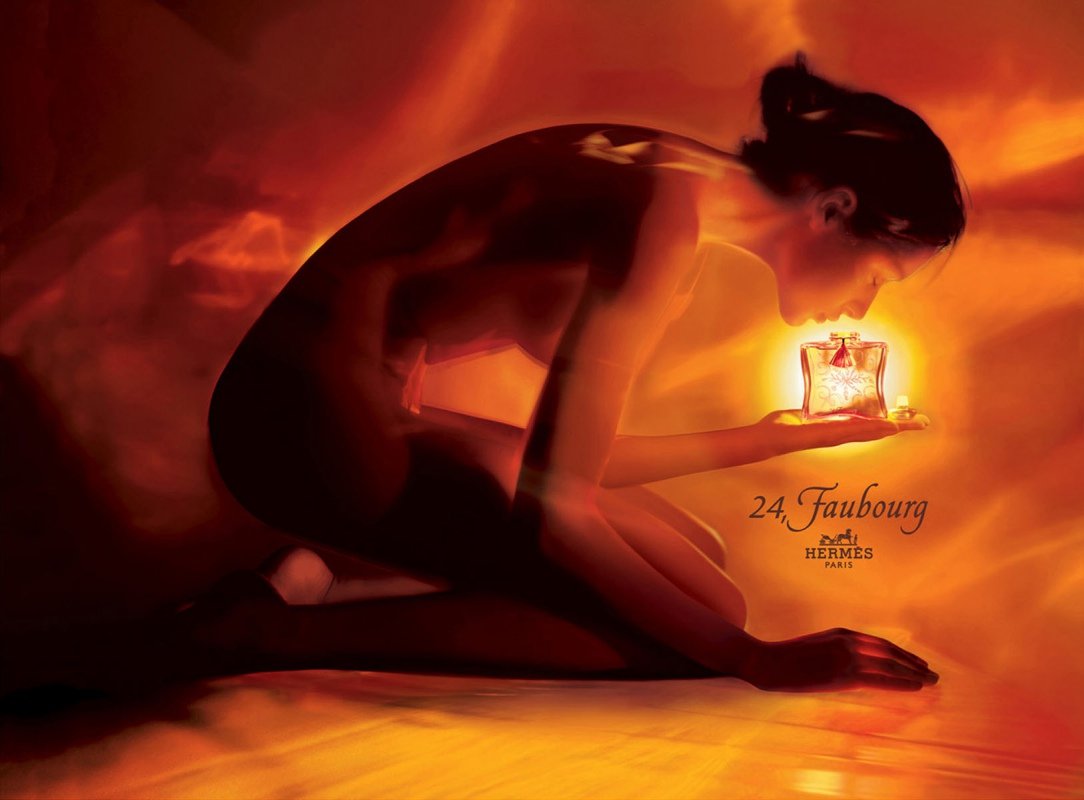


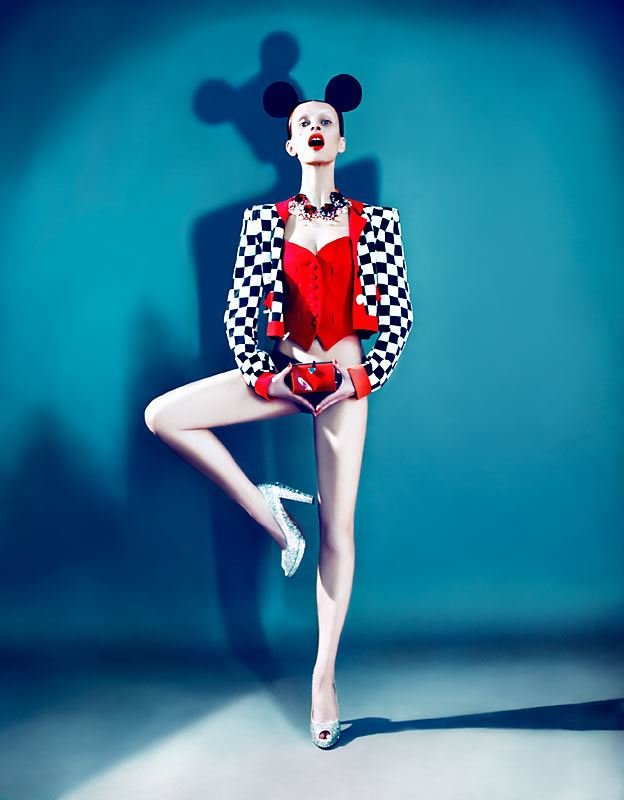
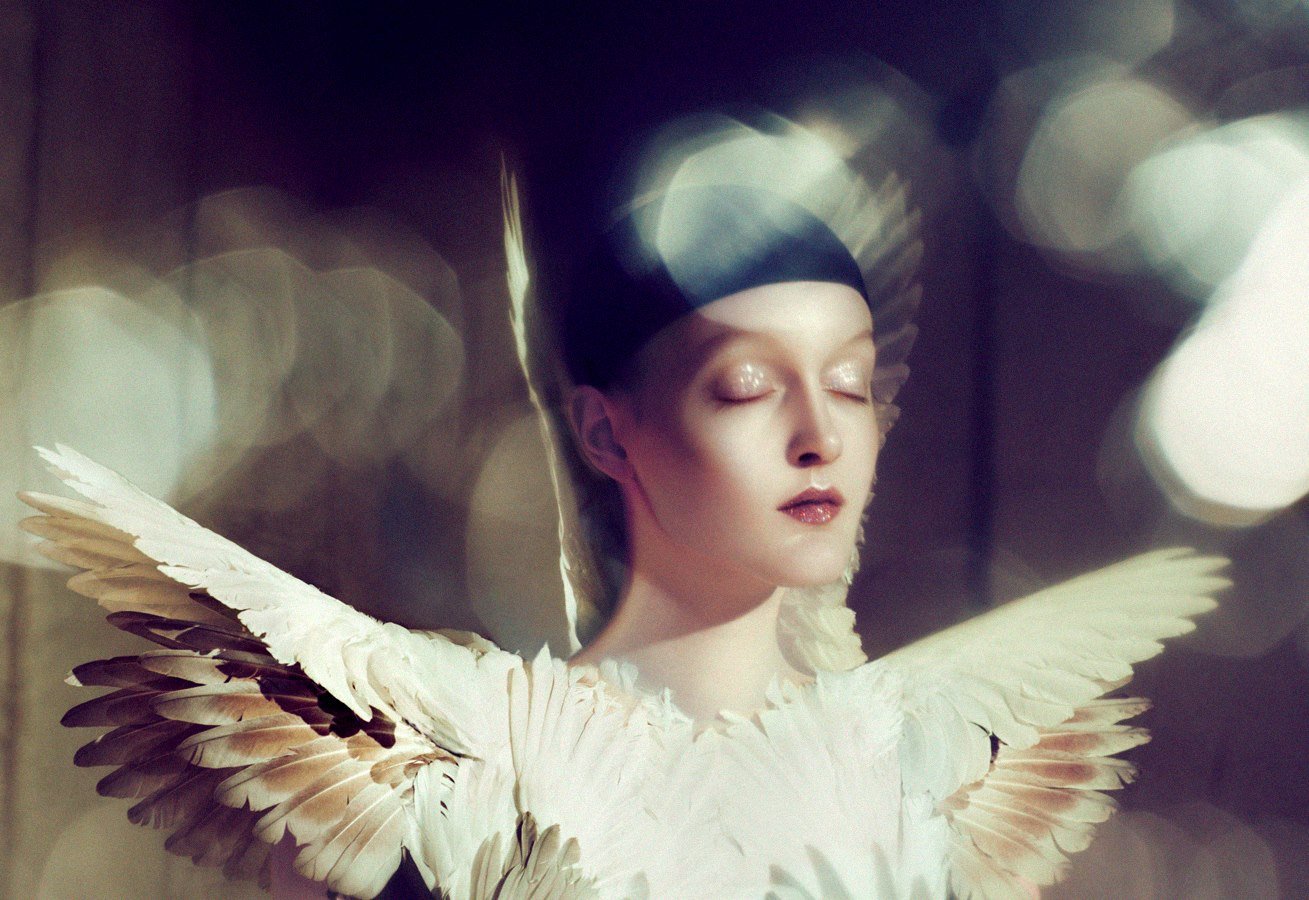
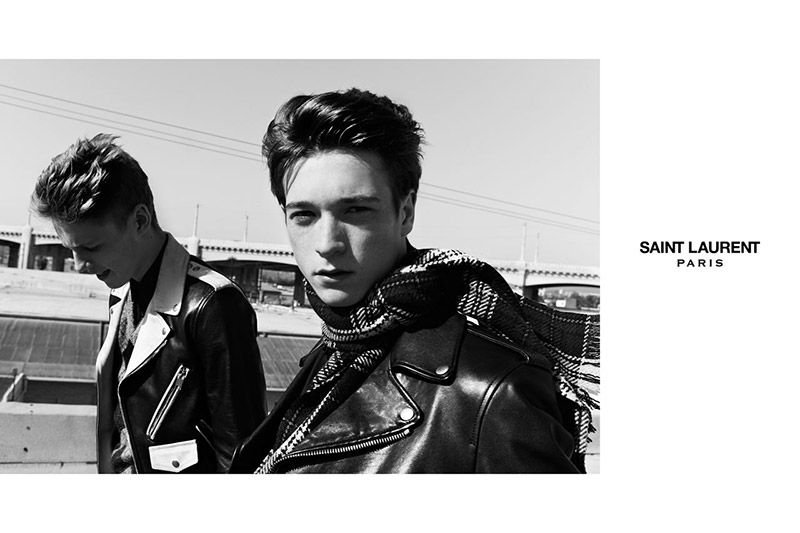
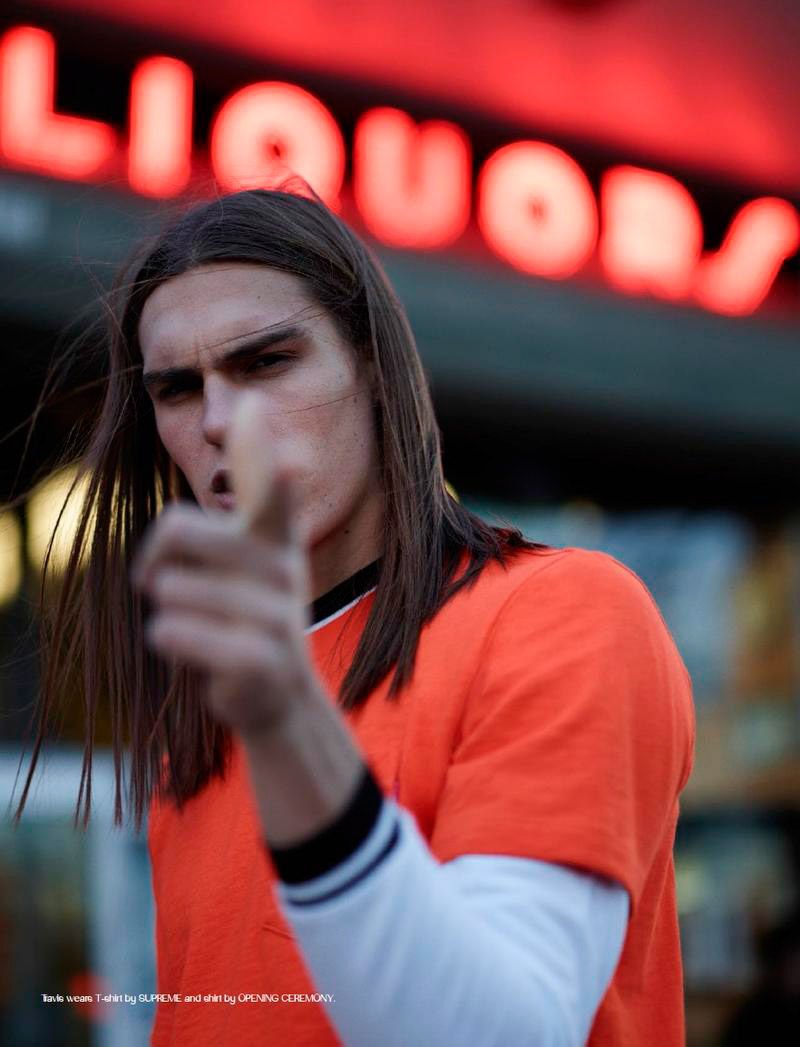
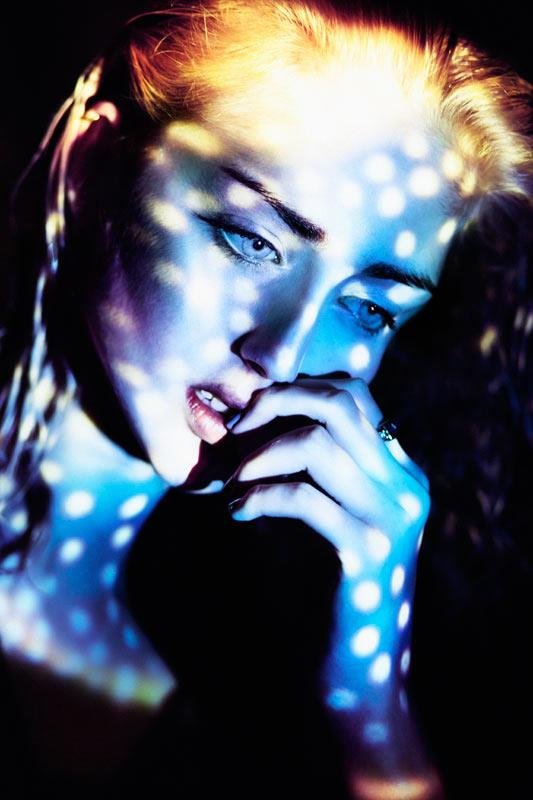

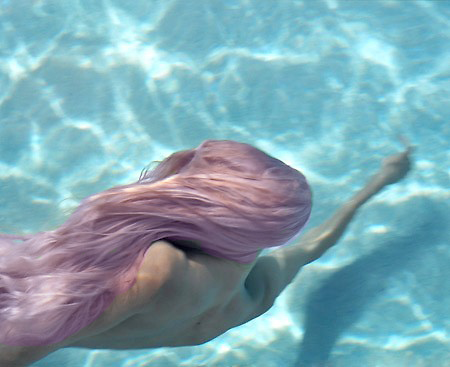


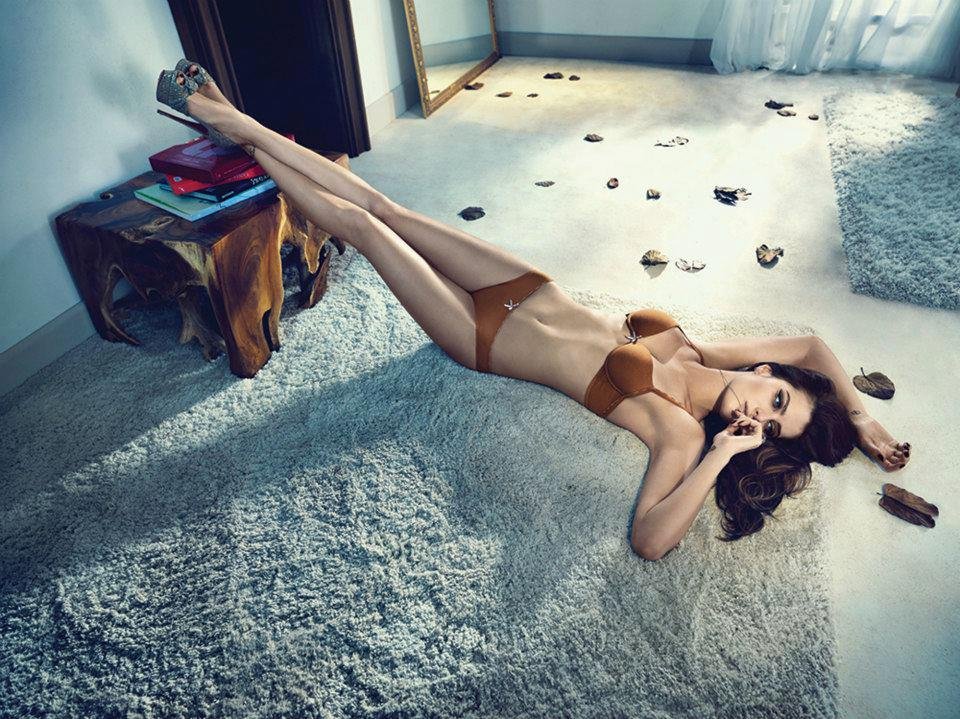
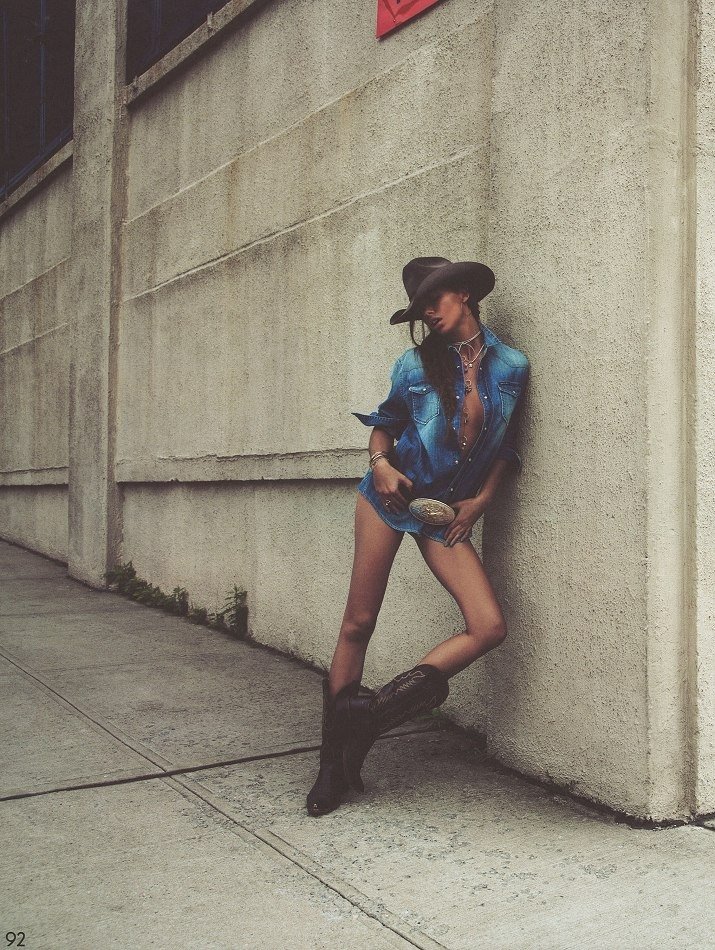


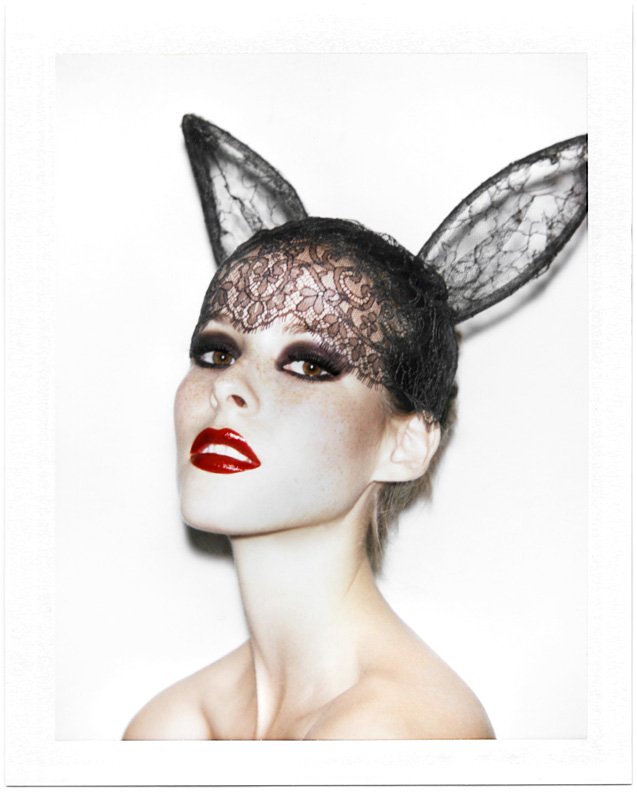



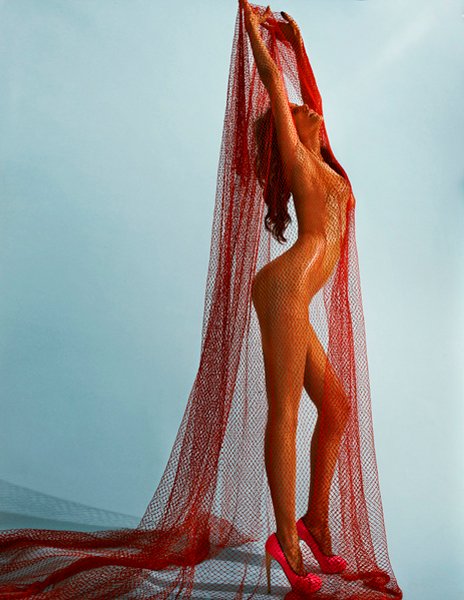

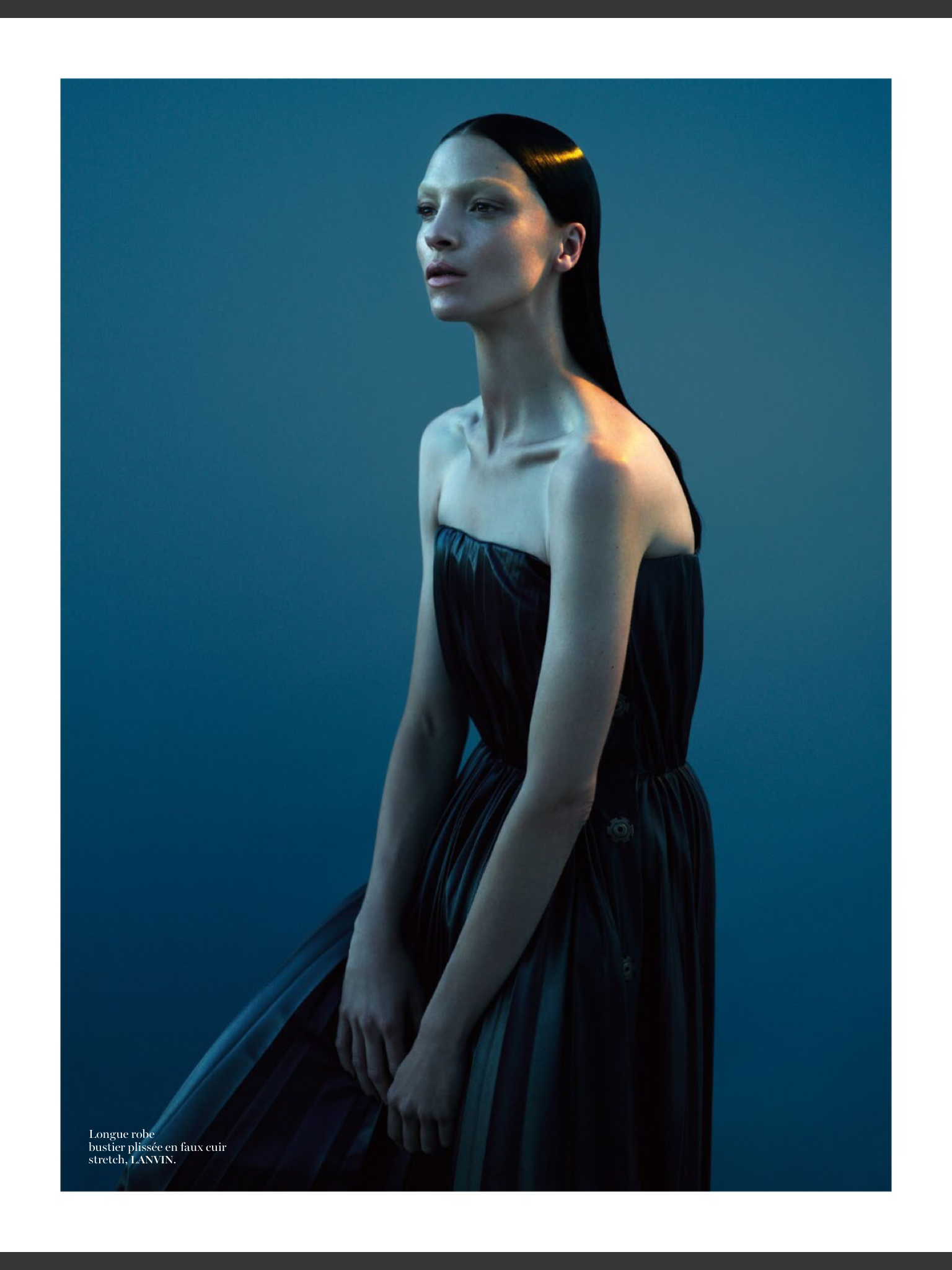
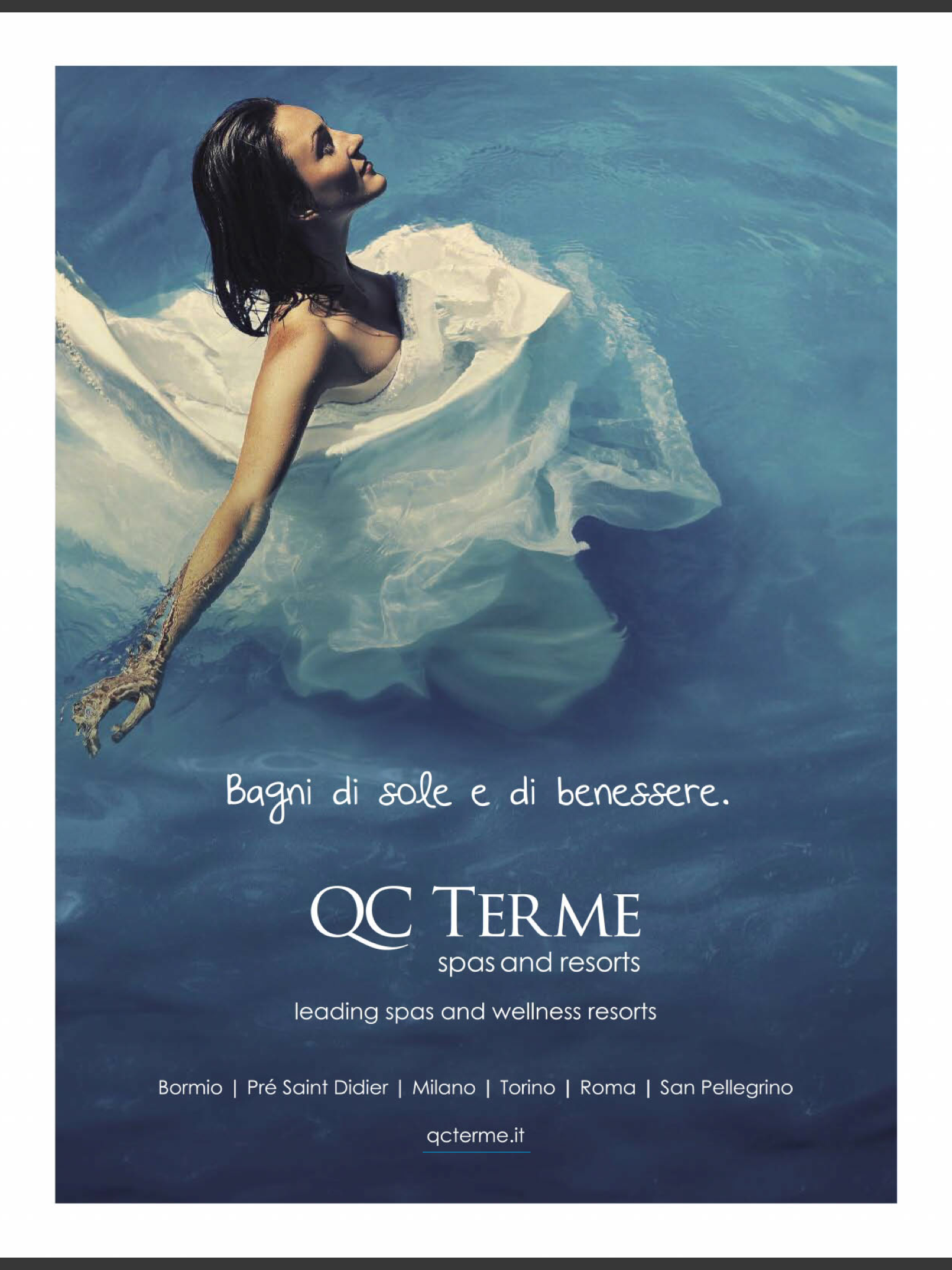


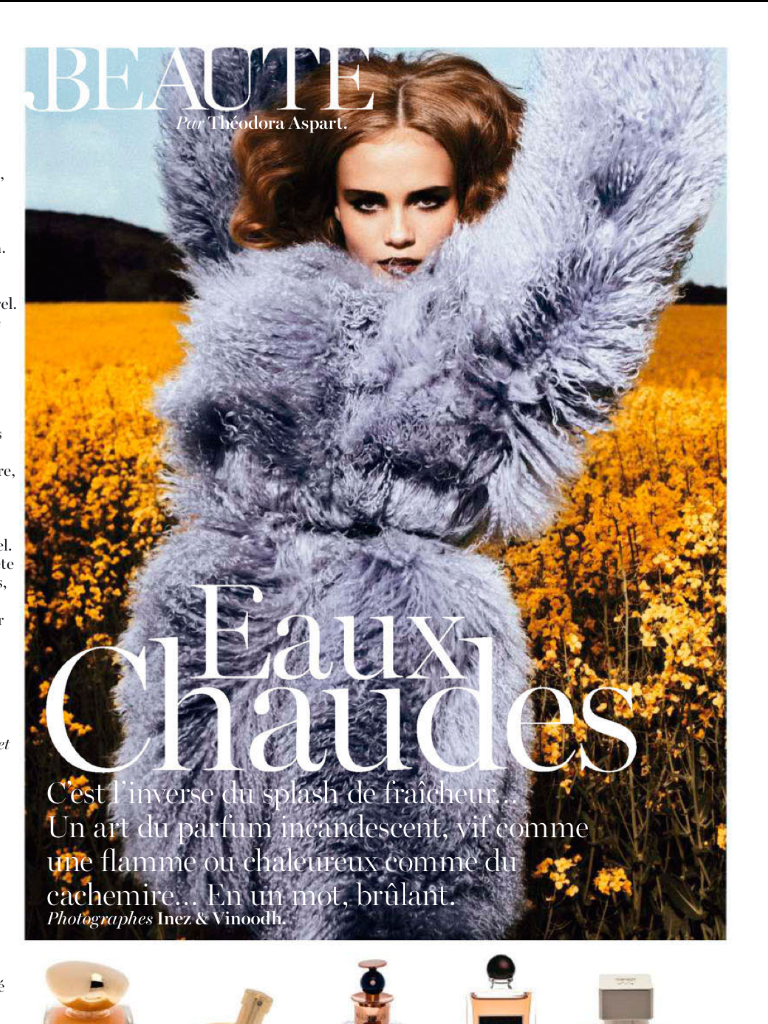

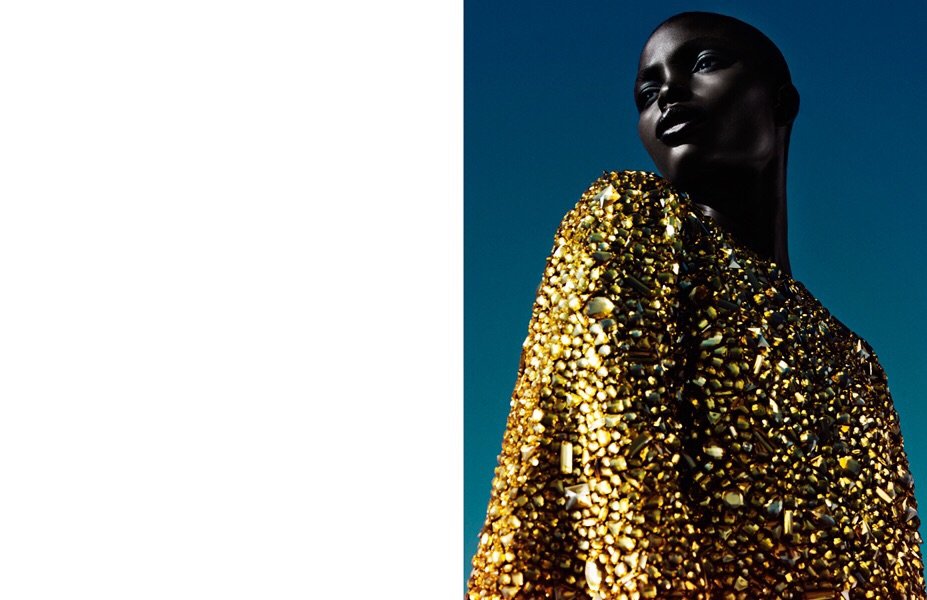


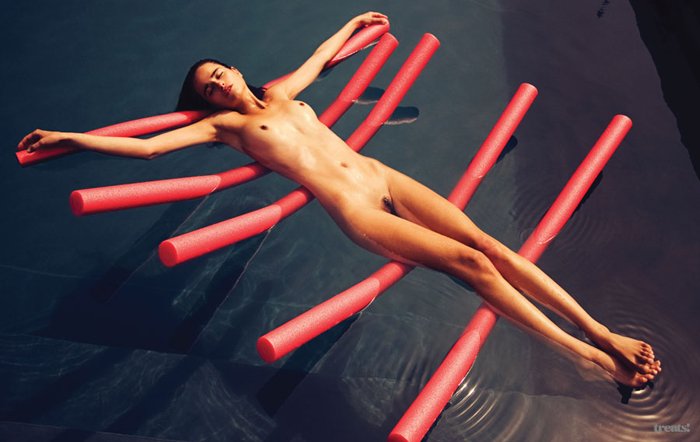


What is Fashion Photography?
The term “fashion photography” describes a type of fine art photography devoted to the promotion of fashion items such as haute couture clothing, as well as mass-market clothes, shoes, perfume and other branded products designed by fashion houses around the world. Practiced by many of the world’s greatest photographers, “fashion photography” should be seen primarily as a form of visual art, rather than an applied art, since the images created do not serve a utilitarian function. Furthermore, 21st century fashion photos – like mainstream TV commercials – are primarily concerned with the promotion of a brand (that is, a concept), rather than a physical product. (Please see also: Is Photography Art?) Whatever its precise meaning or aesthetics, “fashion photography” is closely linked to contemporary art and popular culture. Not only does it reflect popular attitudes, aspirations, and tastes, it also reflects the views that women have, about their self-image, gender and sexuality. In addition, “fashion photography” is inextricably linked to the media. Emerging initially to satisfy the needs of women’s magazines published by Conde Nast and Hearst, such as Vogue and Harper’s Bazaar – today augmented by publications like Elle, Cosmopolitan, Vanity Fair, W, Grazia and Seventeen – it now has instant worldwide impact thanks to the digital computer revolution and the Internet. Although New York replaced Paris as the the mecca of fashion photography as far back as the 1940s, Paris and Milan remain important creative centres, while Far Eastern cities in India and China will no doubt emerge as international fashion centres before long.
|
|
History of Fashion Photography The earliest fashion photos were produced in the 1860s, to document the creations of the leading Parisian fashion houses. The idea of employing professional models was thought to be repugnant, so fashion photographers were reliant upon social celebrities, such as Gertrude Vanderbilt Whitney or Sarah Bernhardt, to act as models. Even when full-time models were later employed, they were sketched by artists rather than photographed, because couturiers and designers thought that photographs would give away their secrets. It wasn’t until the late 1880s that photographs of models were used and then printed in fashion magazines, following the invention of the halftone printing process by Frederic Eugene Ives (1856–1937). This new print process made it possible to reproduce fashion photographs in mass-circulation journals and market fashion to a mass audience. (See also: 19th Century Photographers.) The two most important fashion magazines (both founded in America) were Harper’s Bazaar (founded by Harper & Brothers, first published 1867, later bought by Hearst) and Vogue (founded by Arthur Turnure, first published 1892, later bought by Conde-Nast). These journals and their expanding readership, together with rapidly advancing American technology in the area of photography and printing, made the United States an important centre in the area of fashion photography. Paris Culture and Fashion (1880-1930) But despite America’s technical edge, Paris remained the centre of Western culture, notably in the areas of fine art and printmaking. Indeed with the emergence of major artistic trends like Impressionism (1873-83), Post-Impressionism (1880-1900), Art Nouveau (1890-1914), Fauvism (1905-6) and Cubism (1907-14), Paris was the Mecca for all serious artists involved in painting and sculpture. Berlin was another important centre of avant-garde art and design, thanks to the influence of German Expressionism, as well as the influential Sturm Gallery (1912-32), the later Bauhaus Design School (1919-1933), and the activities of photographers like John Heartfield (1891-1968), Raoul Hausmann (1886-1971), Hannah Hoch (1889-1978), Heinrich Hoffmann (1885-1957) and Laszlo Moholy-Nagy (1895-1946). It was the same in fashion. All the major trends emanated from Paris and Berlin, and it was these French and German fashion trends that were showcased in Harper’s Bazaar and Vogue. And since most of the major couturiers and fashion houses were located in Paris, it was here that most of the pioneering fashion photography was done. Indeed the first serious fashion photo-shoot was done in Paris in 1911 by the American photographer Edward Steichen (1879-1973), when he photographed a series of gowns made by the couturier Paul Poiret, so as to convey their physical quality as well as their formal appearance. Published in the magazine Art et Decoration, Steichen’s images were seen as the first modern fashion photos ever published. Other French magazines that employed fashion photography during the prewar years included La Mode Practique and La Gazette du Bon Ton, while other early 20th-century Parisian fashion photographers include: the Seeberger brothers – Jules Seeberger (1872-1932), Louis Seeberger (1874-1946) and Henri Seeberger (1876-1956) – Maison Reutlinger, Boissonnas et Taponnier and Henri Manuel.
Although hit hard by The Great War (1914-18), France retained its position as the centre of art and fashion throughout the 1920s and 30s, thanks to the birth of Surrealism in 1924, as well as the rise of couturiers such as Chanel, Balenciaga, Schiaparelli, and Lanvin, each of whom became known for their distinctive styles. As a result, the city continued to attract top camera artists including Horst P. Horst (1906-99), Man Ray (1890-1976), Cecil Beaton (1904-80), George Hoyningen-Huene (1900-68), Erwin Blumenfeld (1897-1969), Brassai (1899-1984) and Andre Kertesz (1894-1985), as well as the design-genius Alexey Brodovitch (1898-1971).
Fashion Photography in America (1900-1930) Such activity in Paris did not prevent American fashion photography from progressing also. The country’s growing wealth, the power of Harper’s Bazaar and Vogue, as well as its tradition of photographic art – exemplified by the work of Alfred Stieglitz (1864-1946), and later Paul Strand (1890-1976), Charles Sheeler (1883-1965), Dorothea Lange (1895-1965) and Walker Evans (1903–1975) – all combined to make New York a hotbed of innovation. The first notable American fashion photographer was Baron Adolf de Meyer (1868-1946) – best-known for his elegant portraits of celebrities such as Mary Pickford, John Barrymore, Lillian Gish, Ruth St. Denis, Britain’s King George V and Queen Mary – who in 1913 became the first official fashion photographer for the American magazine Vogue, now owned by Conde-Nast. De Meyer was the first to imbue his fashion photos with a sense of “mood”, by bathing his shots in a limpid atmosphere and shimmering light. This refinement opened the way for fashion photography to evoke a wide range of feelings in the viewer, thus abandoning the traditional convention of using fashion photos for illustration purposes only. (For the evocative effects created by early portrait photographers, see the work of Julia Margaret Cameron: 1815-79.) During the early part of the 20th century, another significant factor in the growth of the American fashion industry (and thus American fashion photography) concerned the rise of the “ready-to-wear” clothes industry, and the contemporaneous development of an independent US style quite unconnected with Parisian fashion. In effect, the American fashion market switched from Parisian couture to individualized ready-to-wear clothing, marketed and promoted through magazines like Women’s Wear Daily (founded 1910), Harper’s Bazaar, and Ladies Home Journal (founded 1883 – and in 1903 became the first American magazine to reach 1 million subscribers). In 1924, Adolf de Meyer’s ‘soft-focus’ effects were superceded by Steichen’s clean geometric style of photographic modernism, which substituted simple but sleek backdrops for de Meyer’s rococo settings. Like the smooth lines, geometric shapes, and streamlined forms of Art Deco – the hugely influential design movement developed in America – Steichen’s photos showed that US fashion photographers intended to lead Europe, not follow it. The fact that America was the land of European emigrants, liberated from the traditional and old fashioned values of their homelands, was an added advantage. Thus Steichen was able to portray the modern woman in a modern style of clothing that reflected her new-found freedom from the corset – a situation later portrayed by Horst P Horst in his seminal Vogue image, entitled “The Mainbocher Corset” (1939). See also Steichen’s series of photographs of Marion Morehouse, who embodied the archetypal “contemporary” woman, the flapper. Another important development was engineered by Carmel Snow, editor-in-chief of Harper’s Bazaar, who arranged for the Hungarian sports photographer Martin Munkacsi (1896-1963) to shoot some photos for a swimwear spread, out in the open on a windy beach. As Lucile Brokaw, the model, ran towards the camera, Munkacsi photographed her in motion, blurred and hair streaming, and in that instant shattered the convention that fashion photographs could only be taken inside a controlled studio environment. Munkacsi’s spontaneous realism revolutionized the aesthetics of fashion photography, and opened the way for others to follow. Also important was the invention of Kodachrome a type of colour film introduced by Eastman Kodak in 1935. One of the first camera artists to use colour in fashion photography was Louise Dahl-Wolfe (1895-1989), best-known for her outdoor photo-shoots for Harper’s Bazaar. She was also one of the first to use natural light, and to use exotic locations for her photography. Surrealist Fashion Photography Presided over by its chief theorist Andre Breton (1896-1966), the Paris-based Surrealism movement, with its fantastic, dreamlike attributes, had a significant influence on fashion photography. This is best exemplified by the work of Man Ray, the American camera artist who charted an entirely new direction for fashion photography, mostly because he disregarded the conventions and experimented with surreal, expressionistic imagery in his dark room. In effect, his contrived, indoor, pictorialist style of work represented the opposite end of the spectrum to the spontaneity of Munkacsi. Another important pictorialist fashion photographer was Erwin Blumenfeld (1897-1969) who employed numerous techniques including solarization, overprinting, juxtapositioning of colour transparencies, and even chilling wet negatives in the refrigerator in order to achieve his surreal effects. Other camera artists who incorporated surrealist ideas in their photos included the Englishman Peter Rose Pulham (1910-56), the Frenchman Andre Durst (1907-49), the American George Platt Lynes (1907-55), and the inimitable Cecil Beaton. |
|
|
The advent of war prompted numerous European painters, sculptors and photographers to move to the safety of the United States. The trend began during the 1930s and accelerated from the time of Hitler’s rise to power in Germany, in 1933. Thus, for instance, the designer and photographer Alexey Brodovitch (1898-1971) emigrated from Paris to New York in 1930; Martin Munkacsi did it in 1934; George Hoyningen-Huene moved in 1935; and Erwin Blumenfeld (1897-1969) in 1941. Fashion in the United States during World War II was a depressing business. Not only was there a serious lack of fashion materials, designers and models, but people had lost interest in clothes in the face of so much tragedy and uncertainty. Fashion was considered a frivolous and unnecessary form of self-indulgence. To reconnect with their readers, fashion magazines profiled women’s role in the war, promoted fashion as morale building, replaced society columns with war reports, and championed tailored but plain uniform-style clothing. Studio photography with its expensive lighting systems and intricate setups disappeared almost entirely. Many photographers (Lee Miller in Paris, Cecil Beaton in London, Louise Dahl-Wolfe in New York) adopted a direct, straightforward style almost like a documentary. By the end of the war, the global centre of fashion photography had shifted from Paris to New York, where the rivalry between Harper’s Bazaar and Vogue was in full swing. The most important photographers were now Martin Munkacsi, Louise Dahl-Wolfe, Irving Penn (1917–2009), Richard Avedon (1923-2004), all of whom would make significant contributions to fashion photography, although Penn and Avedon would dominate the genre for years to come. Like many great modern artists they had the ability to reinvent themselves with almost every decade. Avedon’s photos were marked by their chic insouciance and boundless vitality. He also had a unique gift for inventive risk-taking and imaginative experimentation, and was a perceptive talent-spotter, always finding the “face” that best captures the “look” of the moment, such as Dorian Leigh, Suzy Parker, Twiggy, Jean Shrimpton, Brooke Shields, and Nastassja Kinski. In contrast, Penn’s photography was all about beauty and form – elements that combined most perfectly in his later series of still life photos. He was the first to use austere grey and white backgrounds, and his studio arrangements were both aesthetic and meticulous. If Avedon’s work can be described as “immediate”, Penn’s is “monumental”. In addition to their fashion work, both men produced outstanding portrait art – see, for instance, Penn’s immortal portrait of Pablo Picasso, or Avedon’s portrait of the model Dovima wearing a Dior dress surrounded by African elephants. Another major postwar talent was the British camera artist Norman Parkinson (1913-90), who joined Vogue (International) in 1946 and began working for US Vogue in 1949. Parkinson’s “action realist” style and larger-than-life personality helped to transform conventional fashion photography. In general, one can say that by the mid-1950s, a new fluid and energetic aesthetic had emerged to replace the more static prewar approach. In a sense this was no more than a reflection of the growing confidence shown by both business and consumers as prosperity began to take hold across America. With a rekindled interest in clothes, boosted by the stylish image and outfits of movie-stars, American women began to want more fashion and the magazines duly obliged. In addition to Avedon, Penn and Parkinson, other leading fashion photographers of the 1950s included, William Klein (b.1928) and Lillian Bassman (1917–2012).
Fashion Photography in the 1960s While the 1950s introduced a fresh, adventurous spirit into fashion camera art, the 1960s witnessed a total change. A whole new world of fashion opened up as a result of the 60s cultural revolution. New forms of pop music, pop art, greater leisure time, a more liberal attitude to sex, and of course the sudden “generation gap”, all combined to make fashion intensely relevant for the young – a phenomenon reflected in the emergence of new words like “trendy” and “fashion-conscious”. A widespread urge to be seen as “hip” or “cool” fuelled a demand for new styles, shapes, materials and colours. Other important influences on attitudes to fashion (and thus fashion photography) included the Vietnam War, the NASA Space Program, the women’s liberation movement, and the issue of “race”. Although not 100 percent dominated by youth culture, 60s fashion was redefined by the demands of young people. This widening demand for fashion, allied to changing social and moral values, had a major impact on fashion photography. The best young photographers – such as the London trio of David Bailey (b.1938), Terence Donovan (1936-96) and Brian Duffy (1933-2010) – enjoyed skyrocketing fees and iconic status; Bailey became almost as famous as the celebrities he photographed. Models, too, like Jean Shrimpton (Bailey’s muse), Twiggy, Lauren Hutton and Veruschka, became household names. If 1960s fashion photography had any unifying aesthetic, it was “novelty”. Magazines needed new and exciting images in order to compete. David Bailey was bold, direct and undeniably focused; Terence Donovan pioneered the use of stark and gritty urban environments; Yasuhiro Wakabayashi (b.1930), better known as Hiro, used unusual lighting, creative juxtapositions and a unique feel for colour to create a monumental, surreal style; Bob Richardson (1928-2005) put sex, drugs and rock ‘n’ roll into his photos, as did Art Kane (1925-95) – at 26, the art director for Seventeen Magazine, while Diane Arbus (1923-1971) produced some of the most disturbing children’s fashion images ever published.
Fashion Photography in the 1970s During the 1970s, the exotic, hippy styles of the 60s were replaced with more practical apparel. Jeans became “the” signature item of casualwear, and demand for ready-to-wear (pret-a-porter) clothes exploded. Fashion spread from the young to all ages, and this newly-found consumerism propelled fashion into a multi-billion dollar industry, reinforced by slick advertising campaigns and cutting-edge TV commercials. French Vogue now took the creative lead in fashion photography thanks to camera artists such as Helmut Newton (1920-2004) and Guy Bourdin (1928-91). Newton was best-known for subversive and erotic imagery that somehow maintains an ironic tone, while Bourdin was renowned for his highly artistic, colourful, occasionally surreal images. Deborah Turbeville (1932-2013) was the first to use overweight and unsightly models. All three helped to transform conventional, well-lit fashion-imagery into something much more edgy and offbeat. Fashion models continued to make it big in the 70s. In 1975, Margaux Hemingway signed the first million-dollar contract as the face of Fabergé’s Babe perfume, while Lauren Hutton appeared on cover of Vogue 25 times(!). Black models also hit the big time, as exemplified by Iman, Donyale Luna, Naomi Sims and Beverly Johnson, who was the first African American model to feature on the cover of American Vogue in 1974. Other top models of the 70s decade included Cybill Shepherd, Patti Hansen, Penelope Tree, Grace Jones and Jerry Hall. Fashion Photography in the 1980s While some of the most creative fashion photography of the 1980s continued to be produced by ‘old-timers’ like Richard Avedon – see, for instance, his narrative advertising campaign “The Diors,”or his nude shot of Nastassja Kinski entwined with a snake – younger photographers also emerged into the limelight, including: Herb Ritts (1952-2002), best-known for his iconic shot of “Stephanie, Cindy, Christy, Tatjana, Naomi, Hollywood, 1989” which appeared in Rolling Stone Magazine; Bruce Weber (b.1946) who presented a new outlook on masculinity through his photo-shoots for Armani and Calvin Klein, as did Robert Mapplethorpe (1946-89) with his homoerotic shots; and Gian Paolo Barbieri (b.1938), noted for his work for fashion designers Armani, Versace, Dolce & Gabbana, Pomellato, and Giuseppe Zanotti. At the same time, women’s independence was emphasized in various settings, by photographers like Denis Piel (b.1944) and Bert Stern (1929-2013). Controversy, always a handy tool with which to boost flagging commercial fortunes, reared its head as a result of Benetton’s fashion campaign, shot by Oliviero Toscani (b.1942). Images included one of a patient dying of AIDS in front of grieving relatives, while others incorporated references to racism, war, religion and the death penalty. The leading supermodels of 1980s fashion photography included: Gia Marie Carangi, Ines de la Fressange, Cheryl Tiegs, Christie Brinkley, Paulina Porizkova, Brooke Shields, Heather Locklear, Carol Alt, and Elle Macpherson, among others. It was during this decade that supermodels stopped being seen as individuals and started to be regarded as images, just like movie stars. Witness the celebrity party shots taken by fashion photographer Roxanne Lowit (b.1965) of supermodels like Elle Macpherson, Naomi Campbell and others. Fashion Photography in the 1990s Fashion during the 90s turned almost Mannerist, as consumers embraced shabby grunge styles, as well as tattoos and body piercing. Later in the decade there was a revival of certain late 60s/ early 70s styles, although the 1990s retained an edginess all of its own. Long established artists like Irving Penn and Helmut Newton continued to dominate the field, while Ellen von Unwerth (b.1954) introduced viewers to her unique brand of erotic femininity. In addition, Peter Lindberg (b.1944), noted for his monochrome photos, achieved fame with his January 1990 Vogue cover featuring Christy Turlington, Cindy Crawford, Naomi Campbell, Linda Evangelista and Tatjana Patitz. Meanwhile his younger contemporary Steven Meisel (b.1954) was praised for his shots of Madonna in her 1992 book “Sex” and for Vanity Fair. The Peruvian fashion photographer Mario Testino (b.1954) also received attention for his 1997 Vanity Fair cover photos of the late Lady Di, Princess of Wales. A key photographic trend (dubbed “heroin chic”), perhaps reflecting the gender ambivalence of the age, was the use of pale emaciated androgynous-style models, exemplified by the photo-shoot for Calvin Klein’s “Obsession”, by Mario Sorrenti (b.1971), which featured a waifish Kate Moss. The 1990s saw the apogee of fashion model-power, as embodied by the photographic superstars cited above – Naomi Campbell, Linda Evangelista, Christy Turlington, Claudia Schiffer and Tatjana Patitz. The Heroin Chic style flared briefly in mid-decade, but petered out with the rise to fame of the Brazilian model Gisele Bundchen, in 1999. The 90s also witnessed the growing use of established celebrities in fashion photo-shoots, as exemplified by Julia Roberts, who became the face of Lancome. Fashion Photography in the 21st Century The twenty-first century has already been marked by three things: the 9/11 bombings; globalization and the impoverishment of the Third World; and the economic downturn (2007-2014). This appears to have influenced fashion in numerous ways. Ethical trading practices and green policies are shaping buying policies. Ready-to-wear clothes are now largely manufactured in China. Escapism to mitigate financial and political uncertainties has encouraged a revival of surrealistic or kitsch-style fashion photography, as well as the continued use of celebrities and long established supermodels. Growing disatisfaction with established values in the the wake of worldwide austerity continues to stimulate the use of controversial elements in the design of fashion photoshoots, although not to the extent of Oliviero Toscani’s confrontational 1980s fashion-shoots for Benetton. With the deaths of Herb Ritts (in 2002), Richard Avedon, Helmut Newton, Francesco Scavullo (in 2004), and Irving Penn (in 2009), today’s leading fashion photographers include Patrick Demarchelier, Steven Meisel, Mario Testino, Peter Lindbergh, Oliviero Toscani (b.1942), Annie Leibovitz (b.1949), Nick Knight (b.1958) and David LaChapelle (1963). Younger camera artists include Christophe Kutner, Glen Luchford, Craig McDean and Javier Vallhonrat. Although Kate Moss, Naomi Campbell, Gisele Bundchen and other ‘established’ models continue to lead the field, the new crop of professional fashion models of the 21st century – as cited in American Vogue (May 2007) – include: Agyness Deyn, Lily Donaldson, Chanel Iman, Doutzen Kroes, Sasha Pivovarova, Hilary Rhoda, Coco Rocha, Jessica Stam, Caroline Trentini and Raquel Zimmermann. Meantime the leading fashion magazines (aside from Vogue and Harper’s Bazaar) now include Elle (the world’s best selling fashion magazine), Cosmopolitan, Seventeen, W, Vanity Fair, GQ, Grazia, Marie Claire, as well as Dazed and Confused, and Sleaze Nation. |